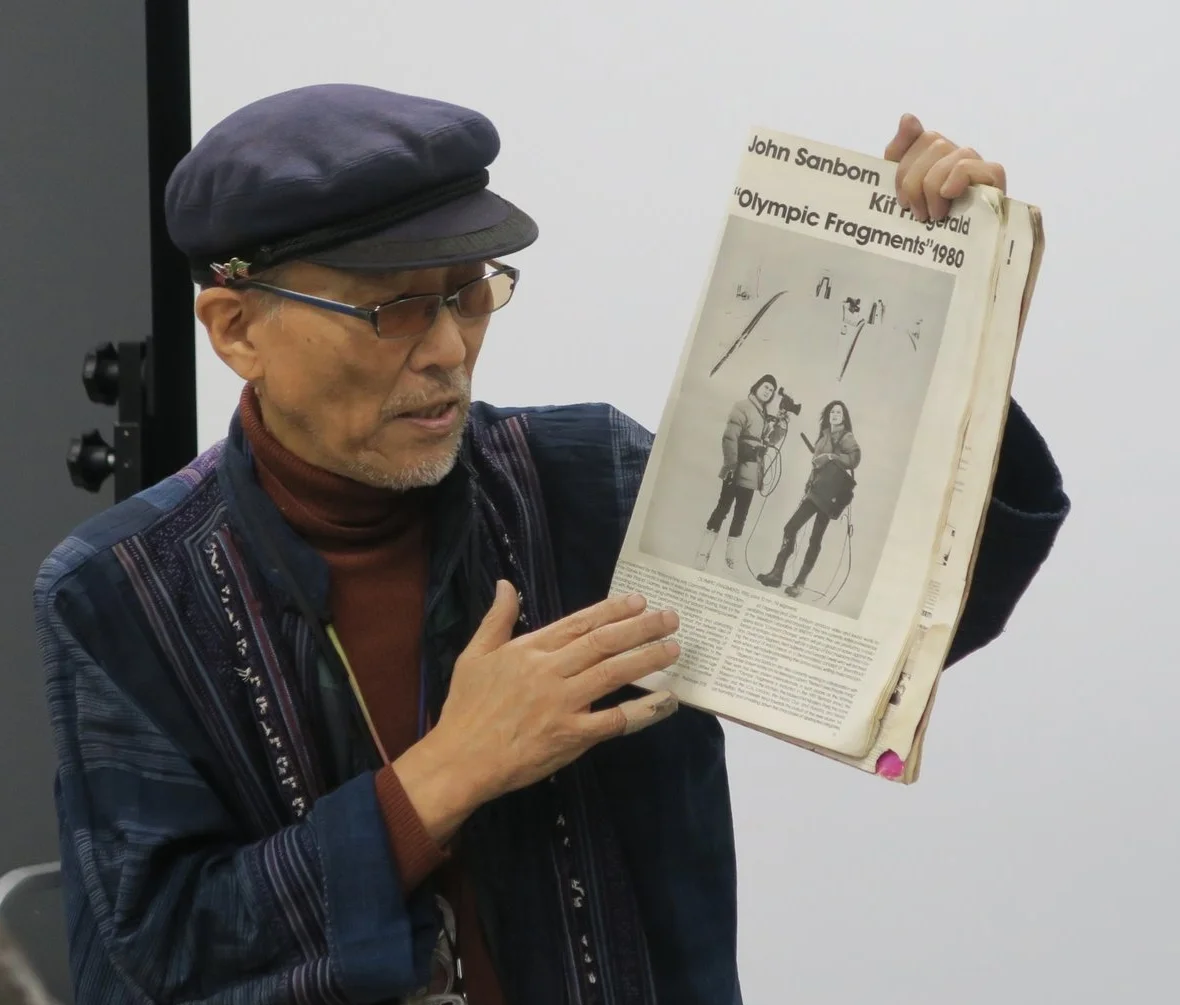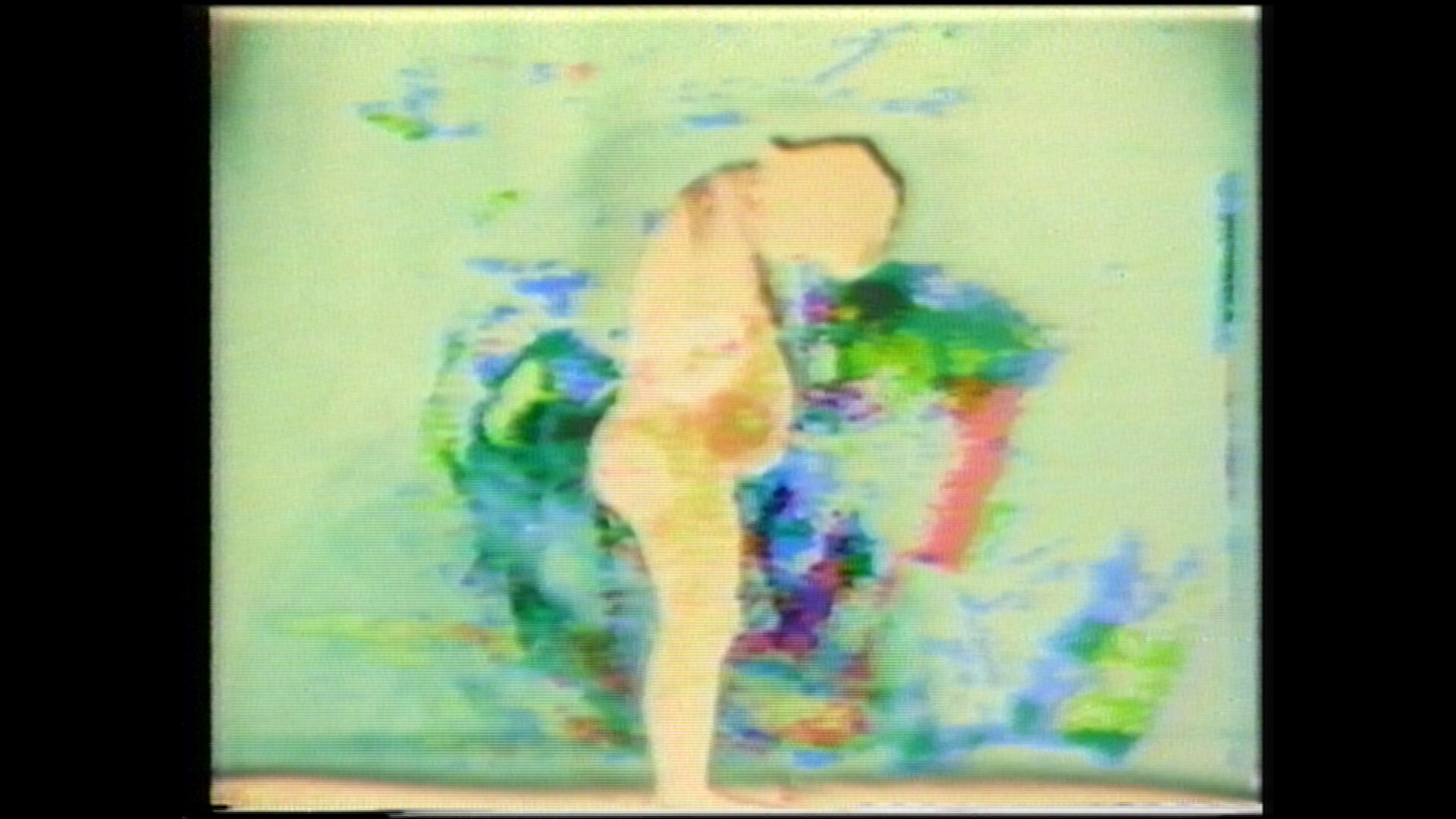ko nakajima part 2
Still from “NAK1015 (with Scanimate)” tape.
Over the next four months, CCJ Monthly Members Viewing will focus on Ko Nakajima’s recently digitized titles, offered in partnership with Keio University Art Center. The presentations will be organized around themes: Study on My Life (January), technical experiments (February), documentary (March), and CATV work and collective Video Earth Tokyo (April).
In February, we dive into Nakajima’s work with technological manipulations using video synthesizers, including Scanimate and Animaker. Animaker was developed by Sony and Nakajima, and automatically takes frame-by-frame shots and performs effect processing. The Animaker became commercially available and sold about 100 units. American video artists such as Dan Sandin, Kit Fitzgerald, John Sanborn, and others are introduced in Japanese television program, alongside Ko Nakajima’s work.
CCJ’s research on Nakajima’s works began with the 2018 Collection Survey. CCJ is pleased to collaborate with Keio University Art Center to present works and video materials that were identified during the survey.
January - My Life Study
The Rooms in the Photographs—Ko Nakajima’s Rooms (2019)
My Life (1971-2014)
February - Technical Experiments
Animaker, Aniputer, Scanimate experiments
March - Documentary
Rolling Coconuts
Have a Seat (1981)
April - CATV / Video Earth Tokyo works
TBA
The programs will be available for viewing on CCJ’s viewing platform.
February: Technical Experiments
NAK1015 (with Scanimate)
NAK1524 (Animaker Sony Demo Reel)
Produced by Michael Goldberg, this is a demonstration video of the “Animaker," a video synthesizer developed by Nakajima and Sony. The Animaker automatically takes frame-by-frame shots and performs effect processing. Mr. Morita, who was the president of Sony at the time, gave money to artists like Nakajima. The Animaker became commercially available and sold about 100 units.
NAK2395 (Sony Afterimage + Scanimation)
NAK3007 (This is Desk, TV program featuring video art 1) John Sanborn & Kit Fitzgerald 2) Dan Sandin, Tom DeFanti and Mimi Shevitz 3) Ko Nakajima
In this Japanese television show, American video artists such as Dan Sandin, Kit Fitzgerald, John Sanborn, and others are introduced alongside Ko Nakajima’s work.
Hitoshi Kubo
A man who was born in Tokyo, 1977 and now lives in Kanagawa. An archivist at Keio University Art Center, among other activities. Departing from certain archives or specific referential materials and montaging various spatiotemporal perspectives that they encompass, many of his projects shed light on not only events that occurred but also those that could have occurred, fundamentally as a way for him to explore possibilities to redesign conditions of human experiences as variable circuits by means of observation, analysis, and construction of montages employed in films and other artistic works, driven by his trust to the world, which in his eyes essentially stands as a process of self-generation and flickering. Recent writings include Montaging Penumbra: on a Motif of Archive (report for JSPS Grants-in-Aid for Scientific Research 26580029 | 2017) and “A Case of a Studio: Shuzo Takiguchi and a
Laboratory,” NACT Review, no. 5 (2018 | National Art Center Tokyo). At Keio University Art Center, he has directed a project to reconsider archives, called Pleating Machine (2018–).
久保仁志:
1977年に東京で生まれ現在神奈川で暮らす。慶應義塾大学アート・センター・アーキヴィスト他。プロジェクトの多くはあるアーカイヴおよび具体的諸資料から出発し、それらが包含する様々な時空間的パースペクティヴを編集(モンタージュ)することで起こった出来事だけでなく起こりえた出来事を照射してみせるのだが、その根底にあるのは映画をはじめとした芸術作品における編集の観察・分析・構築を通して人間の経験の諸条件を可変的回路として設計し直す可能性の探求であり生成明滅しつつも過程としてあるこの世界への信にほ
かならない。近著に『〈半影〉のモンタージュ:アーカイヴの一つのモチーフについて』(「JSPS 科研費 26580029」レポート|2017年)、「ある書斎の事件記録——瀧口修造と実験室について」『NACT Review 国立新美術館研究紀要』5号(2018|国立新美術館)慶應義塾大学アート・センターにてアーカイヴを考えるための企画『プリーツ・マシーン』(2018-)を行っている。








